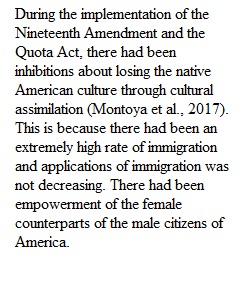


Q In this assignment, you will consider the ways in which the post-World War I era saw both the granting and restriction of freedoms to different demographic groups and then write a response in which you consider how important legislation in this era reflected the evolving values of contemporary society. To get started, click the MindTap link in the Get Started Module and follow the directions below: • Navigate to Unit 6: Modern United States Imperialism and the World at War and click the drop-down arrow on the right. • Select the drop-down error on the left for Chapter 19: Managing Modernity. • Select the drop-down for Review and Test Yourself • Select Chapter 19 Reflection Activity: Managing Modernity Interactive Timeline When the activity opens, read the background information and the writing prompt. Then click the "The Making of Industrial America Timeline" link in the activity to start gathering information for your response. Your response should be 2-3 paragraphs in length, and should meet the following criteria: • It addresses all portions of the topic or prompt. • It has a fully developed thesis. • Ideas are stated clearly and easy to understand. • Major supporting ideas are thoughtful, readily identi?able and well-developed in uni?ed paragraphs with concrete, substantial and relevant information. • It demonstrates command of language, with precise word choices, and few—if any—errors in usage or mechanics. When you’re done, submit your work to your instructor using the Turnitin link at the bottom of the Assignment page in Canvas. (Do not submit via the writing prompt window.) The immediate postwar era was not free of conflict, though the dispute shifted from the military to the social realm. In 1920, following decades of struggle, the Nineteenth Amendment was ratified, giving women across the United States the right to vote. Less than a year later, Congress passed the Emergency Quota Act, which put strict limitations on the amount and national origin of newly arriving immigrants in the nation. Both the amendment and the Quota Act set demarcations on what type of person would, and would not, be granted certain civil rights. Taken together, what do these two pieces of legislation indicate about the evolving population of the United States, the concerns of the populace, and the type of person imagined to be a “true” American? Which populations and groups were excluded from full citizenship, through legitimate and illegitimate means, and for what reasons? Explore the interactive timeline below and write your response in the space provided. Managing Modernity Timeline
View Related Questions